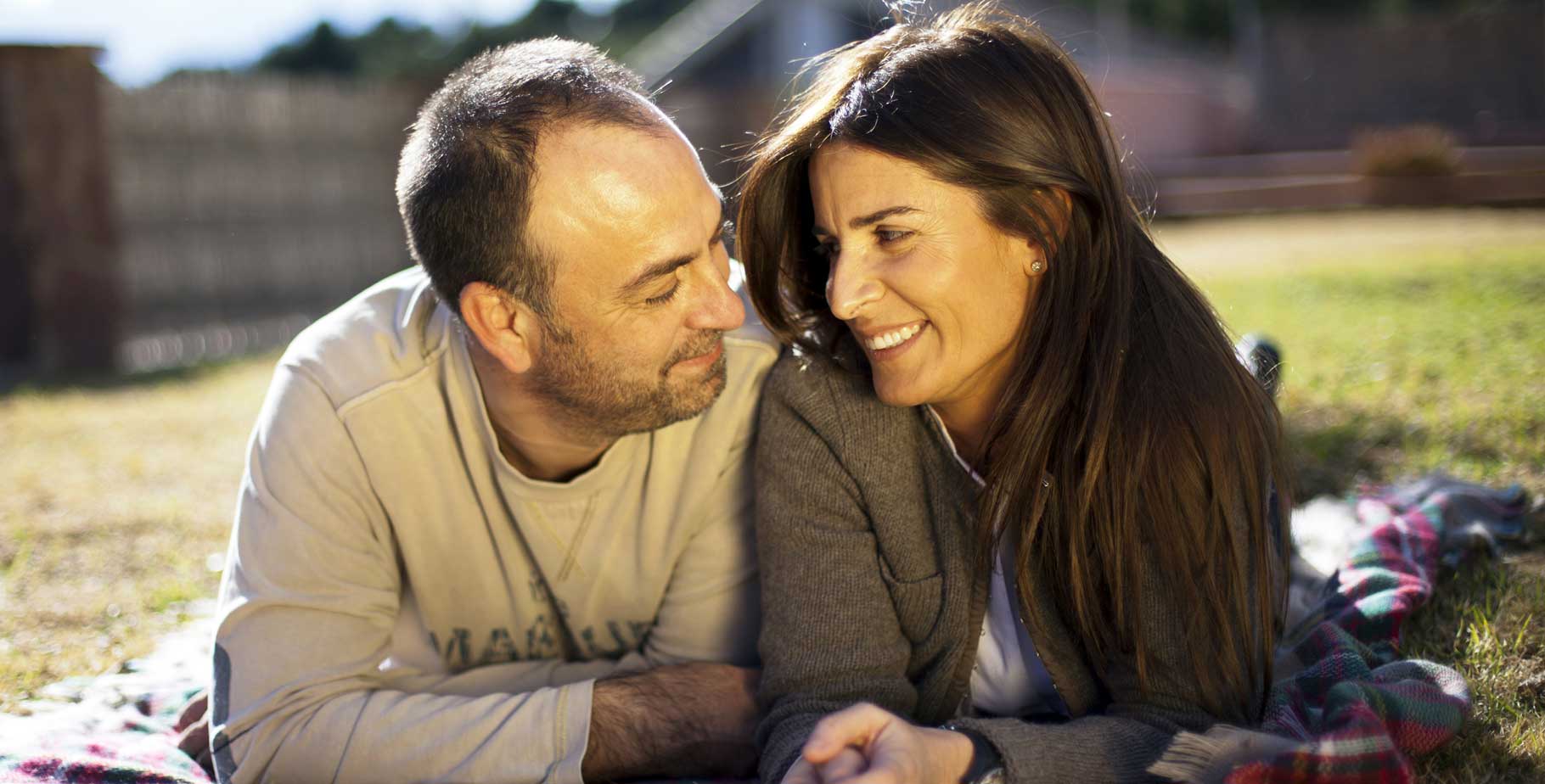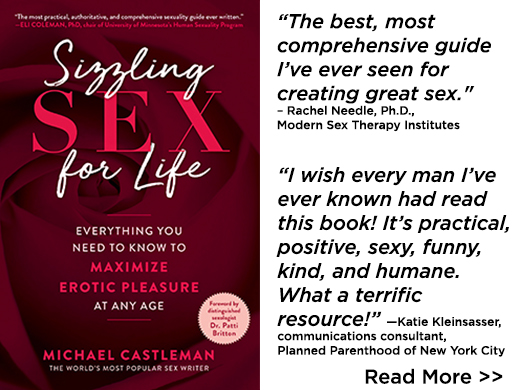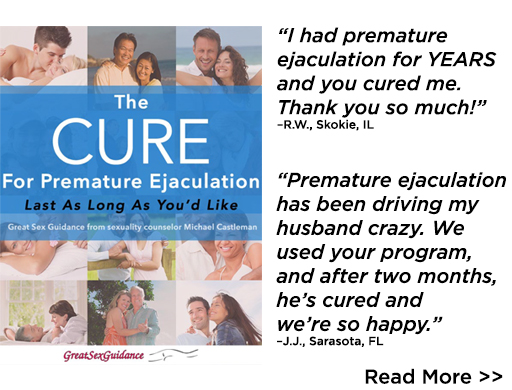
Many young men burn with lust. But after 30, male libido becomes more like women’s. Three maxims attest to the pervasive belief that men are constantly horny, always eager to bed almost any woman:
• Men have only one thing on their minds.
• Men have two heads, and the little one does the thinking.
• Men lust. Women want to feel desired.
In addition, an old joke makes the same point: What single word can women say to sexually arouse men? Hello.
Chances are you’ve heard one or more of these, which attests to the prevalence of assumptions about rampant male lust. But sexual urgency, the feeling that I need sex NOW, is age-related. Yes, lust animates many young men—and many young women and non-binary individuals, too. But a recent study shows that after age 30, men’s desire for sex becomes more nuanced, more complex—and in contrast to the stereotype, more like women’s.
The Study
A team of largely women Canadian researchers conducted extensive semi-structured interviews with 30 men, age 30 to 65 (average age 43), all involved in heterosexual relationships for at least 2.5 years.
The researchers limited their sample to 30 men for efficiency. A robust literature shows that in studies based on lengthy interviews, after around two dozen, participants rarely produce significantly new responses.
The investigators selected age 30 as their subjects’ lower limit because they wanted to discuss desire with men who were no longer “young,” but in the researchers’ words, “firmly into adulthood.”
And the researchers selected 2.5 years (30 months) as the lower limit for relationship duration to exclude men still in the early, lusty, hot-and-heavy period, which rarely lasts longer than two years.
The men were reasonably representative same of two Canadian cities—Winnipeg, Manitoba (16 men), and Saskatoon, Saskatchewan (14). They received gift cards for participating.
To make the men feel as comfortable as possible, the researchers began the interviews with questions unrelated to sex, and only after some time and considerable back and forth, did they address desire. When they did, the investigators asked the men to describe all the factors they could think of that either piqued or inhibited their libidos.
The men came up with 23 factors that turned them on or off, but most focused on six elements—three that increased desire, three that torpedoed it.
Top Turn-Ons
The trio of turn-ons included: feeling desired, unexpected sexual opportunities, and the intimacy of the couple’s communication.
• Feeling Desired. This was the #1 factor affecting desire. Almost three-quarters of the men (73 percent) called feeling desired critical to their libidos. Most mentioned some version of the adage, “Men lust. Women want to feel desired”—and disagreed with it. They loved their partners coming on to them, from playfully initiating erotic touch to saying, “Let’s do it.”
“It’s one thing for her to say, ‘I want you,’ quite another for her to initiate things.” Age 32/five years into his relationship.
“When she shows me she wants sex, it doesn’t take me long to get excited.” 51/31 years.
“Feeling desired is a basic human need for both women and men. Everyone wants to feel desired. I want her to want me as much as I want her.” 65/13 years.
• Unexpected Sexual Opportunities. Two-thirds of the men (66 percent) said they turned lusty when their spouses presented sexual prospects that were unanticipated.
Many of the men said their sex was usually scheduled in advance. This is what sex therapists almost universally recommend for longterm couples, especially those with significant desire differences. But the men said occasional spontaneity got them excited, particularly when their partners initiated it.
“When there’s an element of surprise, yeah, that’s exciting.” 55/19 years.
“Some spontaneity, that’s the best.” 33/5 years.
• Communication. More than half the men (53 percent) affirmed that to become sexually aroused, they had to feel an emotional connection with their partner, a connection best made by self-revealing conversation and shared laughter.
“I’m a musician. [My work hours] have stressed our relationship. Now my band is on hiatus, which stresses me. We were talking about that, getting deep into my sense of loss. Her being so interested in something that’s caused friction in our relationship, that felt validating—and arousing.” 33/5 years.
The men said the most arousing couple conversations had to do with lovemaking.
“It’s healthy for a sexual relationship when the people talk about their sex. When you can talk about what you want and like, that helps.” 65/13 years.
Top Turn-Offs
The men’s three biggest libido killers included: illness, rejection, and strained emotional connection with their mate.
• Illness. For most study participants (60 percent), the top—and for some, only—turn-off was feeling acutely ill.
“Just about the only thing that kills my libido is being sick.” Age 42/11 years into his relationship.
“When I’m sick, my sex drive disappears.” 33/6 years.
• Rejection. Most of the men (60 percent) cited turn-downs as their other top turn-off, especially chronic sexual rejection.
“If she doesn’t want me, forget it. I don’t feel it anymore.” 30/5 years.
“I’m usually very upbeat, but when you’re always getting rejected, it’s easier not to think about sex” 42/11 years.
“She’s just not interested anymore, which makes me feel the same,” 55/19 years.
• Strained Emotional Connections. A majority of the men (57 percent) said they could not separate their libidos from how they felt about their relationships’ emotional closeness—or distance.
“I want to feel on the same page emotionally. If we’re disagreeing, I don’t want sex.” 33/6 years.
“When we’re not connecting, I’m not into it.” 52/16 years.
“In all our years together, I’ve said ‘no’ to her only a few times—when she’s made me feel really frustrated or angry.” 42/11 years.
Who Are Men Sexually?
It’s easy to argue that men have only one thing on their minds. A huge research literature shows that compared with women, on average, men think about sex more, have stronger libidos, self-sex more, are more open to casual sex, initiate sex more often, continue to crave sex more after the initial hot-and-heavy period ends, and are more likely to judge the health of their relationships based on the frequency and quality of the sex.
On the other hand, many men don’t feel that way. They bridle at cultural expectations that they should be horny goats. And when couples consult sex therapists for toxic desire differences, in one-third to half of cases, it’s the man who wants sex less.
In this study, the men’s attitudes about desire for partner sex paralleled the stereotype for women. They valued feeling desired, and viewed lovemaking as an extension of emotional communication and intimacy.
So who are men sexually? Whoever they are as individuals. Our sexuality is as unique as our DNA.
The myth is that men are wolves, women sheep. Actually, as men become mature adults, their feelings about sexual desire increasingly match women’s.
The myth is that sexually, men and women inhabit different planets—men Mars, women Venus. Actually, all genders hail from the same planet, the one in between those two. Earth.
PS: In this study, the men placed great value on erotic novelty and spousal conversations about their lovemaking. In my recent book, Sizzling Sex for Life, novelty and mutual coaching are two of the 10 ingredients of sizzling sex. Check out Chapter 6: “Sexual Coaching Made Easy: How to Ask for What You Want,” and Chapter 9: “Novelty: Sizzling Sex Feels New and Different.”



